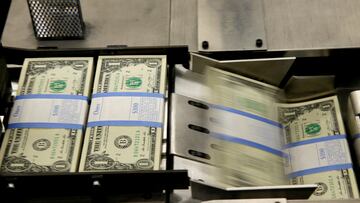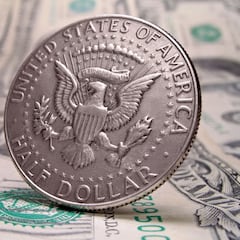How to fix damaged or ripped money: Is it accepted in stores and vending machines?
While paying with a card, watch or smartphone is becoming more common, most of us still use crisp cash. But what to do when it’s not so ‘crisp’ or damaged?

Nowadays, keeping cash on hand seems like a nuisance, as it is so easy to pay at the checkout with a debit or credit card. But we still have cold hard cash, for the time being, which we think is always legal tender. But as age takes its toll on all us humans so too does it on our beloved ‘Greenbacks’
Having worked at the till and hearing stories from others that have, the list is long of seeing dollar bills in less than perfect condition. However, when is a bill “unfit” for circulation and it happens that you go to pay with it that the person at the register, let alone the bank says “That ain’t no good here!” What can you do?
How to fix damaged or ripped money: Is it accepted in stores and vending machines?
“A fancy word for paper in the currency business is substrate,” according to the US Bureau of Engraving and Printing. But the material that is used is some of the sturdiest. “U.S. currency paper is composed of 25% linen and 75% cotton, with red and blue fibers distributed randomly throughout to make imitation more difficult,” the bureau adds.
An average one dollar bill lasts around 6.6 year according to the Federal Reserve, a $100 bill can last almost 23 years. Your George Washington dollar bill will meet the hands of approximately 110 people on average per year. That is a lot of use and in the process those crisp bills from the printing press get worn down and become “unfit” or dare say “mutilated.”
It is common for people to just put some Scotch tape on a bill when it gets ripped but that might not be the best way to deal with a “unfit” dollar bill. While some establishments may accept that “fixed” banknote, don’t expect that to happen, and most likely a vending machine will reject it out right.
That “unfit” bill will, once it gets to the Federal Reserve, will most likely become compost or recycled, but perhaps by chance, should you visit the St Louis branch of the Federal Reserve you can take home a free bag of shredded up dollar bills called “Fed shreds.”
An “unfit” dollar may be accepted, depending on the level of “unfit” that it is. The definition of “unfit” according to the Federal Reserve System’s Cash Product Office is one whose physical condition is torn, worn, limp, dirty and/or defaced.
Roughly 85% of the dollar bills that get deposited with the Eighth Federal Reserve District in St Louis is fit to go back out into circulation. If you are worried about the state of the Greenback that you have, if they are “unfit” you can take them to your local commercial bank to exchange them. But what if not even your bank will accept those dollars because they are considered “mutilated.”
How can you tell your dollar banknote is “mutilated”?
Typically banknotes get mutilated because of “fire, misuse, or even deterioration from burying money,” according to the Federal Reserve. That is, those that have cuts or damaged ends and are discolored.
What can you do with your “mutilated” dollar banknotes?
You will have to contact the Bureau of Engraving and Printing directly. It will require filing a mutilated currency claim. The Bureau of Engraving and Printing provides a step-by-step guide to redeeming mutilated currency.
Related stories
“The BEP will evaluate the note. They have special tools to examine the authenticity and assess the full value of the note. After they do that, they can issue a check back to the consumer,” a Fed currency representative explains.
New designs in circulation
For your information, the Federal Reserve will be introducing new designs for the $5, $20, $50 and $100 bills. The introduction of the new $50 bill will take place in 2028, the $20 bill in 2030, the $5 bill between 2032 and 2035 and the $100 bill between 2034 and 2038.


Complete your personal details to comment